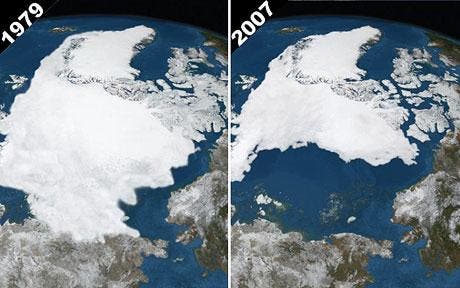It’s important to understand that our planet’s climate consists of so much interconnected elements, that what happens someplace affects virtually the entire Earth. Thing is, few people realize the huge impact the warming in the Arctic has on global climate.
At a news conference held on Tuesday, several researchers said that the melting ice may be weakening the jet stream currents, causing very cold weather to hang around more in the Northern latitude.
The jet stream is a massive current of air that blows from east to west, several miles above the Earth’s surface. It changes position over time, pushing massive weather systems around and preventing them from staying in any one place too long. However, as weather continues to warm more and more, ice continues to melt more and more; water of course doesn’t reflect as much solar energy as ice and snow, and as a result, it melts even more, and this heats the atmosphere above, which influences the atmospheric pressure.
This change in pressure in particular slows the jet stream, which means that it can’t can transport less warm air over land in the winter, causing snow and cold to stick with us a little longer. Unfortunately, it’s not going to get any better in future years unless conditions change – and in terms of Arctic ice loss, it doesn’t look very likely.
“The sea ice is going rapidly. It’s 80 percent less than it was just 30 years ago,” said Jennifer Francis, research professor with the Rutgers Institute of Coastal and Marine Science, in an interview with The Guardian. “This is a symptom of global warming and it contributes to enhanced warming in the Arctic.”
Considering recent trends, it’s more likely that conditions will worsen. With less ice, the area absorbs more heat. With more heat, more ice melts – and the cycle, once started, fuels itself.



